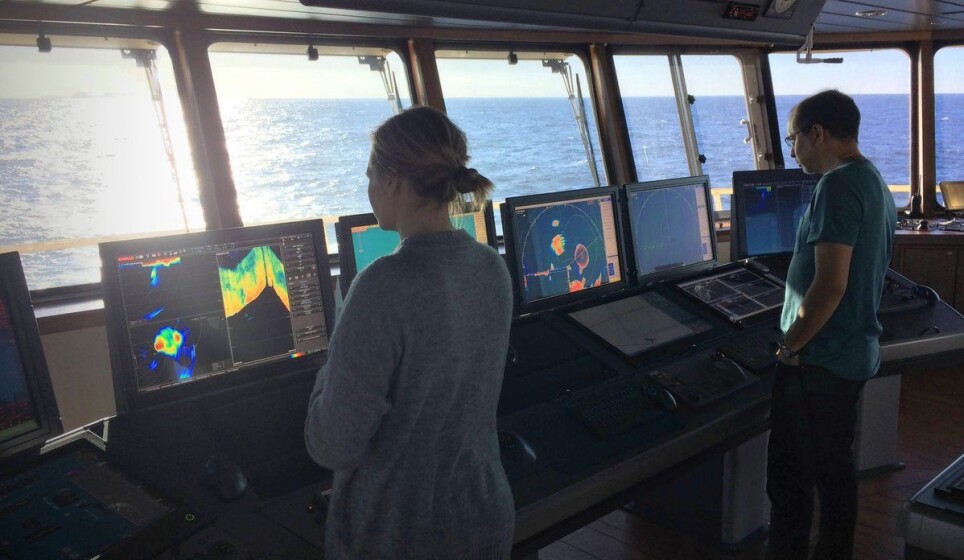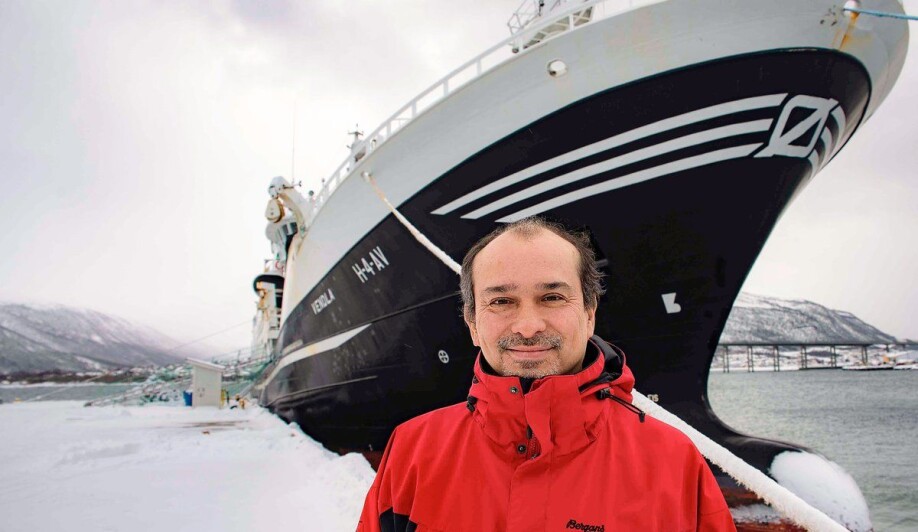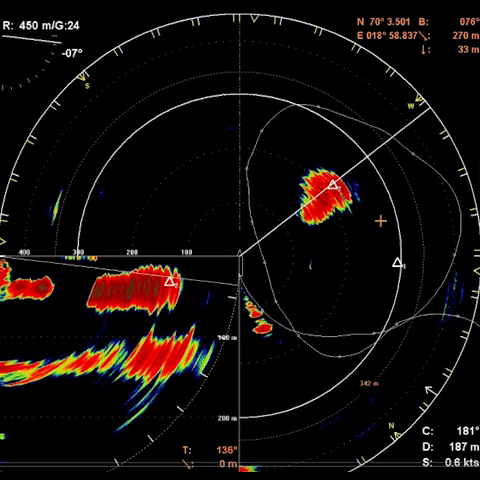THIS ARTICLE/PRESS RELEASE IS PAID FOR AND PRESENTED BY the Institute of Marine Research - read more

Researchers have given sonar the power to calculate the tonnes of fish in a shcool
This is good news for both fishers and fish stocks.
“We have managed to develop a precise method for answering the vital question: how many tonnes of fish are there in a school of fish?” says marine scientist Héctor Peña.
The method, which has been published in a new scientific article, combines raw data from sonar with physics and advanced mathematics. It generates a single number for how many tonnes the fish in a school of herring or mackerel weigh, as well as a value for the uncertainty of the estimate.
The results are available to the public, and sonar producers are free to implement the new algorithm into their products. (See fact box.)
This has been the problem
Whereas an echo sounder sees what is directly under the ship, a sonar can show large schools of fish at distances of between two and five kilometres from the vessel. The sonar is a key piece of equipment for ships, but the fishers have to interpret what it is showing.
“Basically, you can see what volume of water a school is occupying, but not how many tonnes of fish it contains,” explains Peña.
“That is something that individual captains have to work out, based on a good understanding of their own sonar and experience of how fish behave. Mistakes can be costly, either for the fishers themselves, or for the stock and hence society’s marine resources.”
No-one wants to catch too many fish at once
If a fishing vessel catches a school of herring that turns out to weigh 1,000 tonnes instead of 400 tonnes, in the worst case scenario the net may burst.
Even if they manage to land a massive catch like this, the quality and price tends to be lower than for a catch according to the plan.
“You can also try releasing part of the catch. But regardless of whether the net bursts or you release some of the fish, an unnecessarily large number will die from crowding, lack of oxygen or scale loss,” says Peña.
Even though purse seining is one of the most environmentally friendly and selective forms of fishing, excessively large catches are a problem that researchers and the fisheries authorities are well aware of.

Unrecorded fish mortality
Fish that die in the sea are not landed and hence they are never recorded as part of the catch. This unrecorded fish mortality can mess up scientists’ forecasts as to whether a fish stock will grow or shrink.
“For scientists, the amount of fish caught is one of the important inputs when trying to estimate the size of a fish stock. That’s something we need to do in order to say how much fish can be caught sustainably in following years. Unrecorded fish mortality can cause unexpected dips in the size of stocks,” explains Peña.
With the method now developed by the researchers, sonars will in the future be able to give fishers an objective estimate before they cast their net.
Must inspect the school thoroughly
“So far, it appears that the margin of error is around twenty percent either side. But that is dependent on the captain being patient and taking the time needed to inspect the school from several sides. That provides important information about the behaviour of the fish, which is the key to the accuracy of the method,” explains Héctor Peña.
This is because the target strength, that is the ability to reflect sound, is lower for fish swimming straight at you than for fish measured from the side. If you compare it with what we can see with our eyes, it is like the silhouette of a fish seen from the front compared with its side profile. And for echoes, the difference is much, much bigger.
The sonar must therefore get a 360-degree view of the school before performing its calculations.
Method is species-specific
The scientists have started by developing a calculation method for herring and mackerel, but the principle is transferable to other species.
In order to come up with it, they used modern Simrad 64-beam sonars calibrated to scientific levels of accuracy. The higher the number of sonar beams, the more information you get about the school – a bit like the resolution of a digital camera.
If all of the beams have been calibrated against a known object, normally a reference sphere made of metal that the researchers lower in the water, together they provide data that is reliable enough to calculate both the volume and density of the school.
Checked against whole schools
“In order to assess the accuracy of the measurements, we had to measure and catch a total of 76 schools of herring and mackerel using chartered purse seiners.”
The scientists needed to catch the whole school. But they also had to keep within a research quota of 600 tonnes of fish in total per cruise.

“Not like going to the supermarket”
“The crews on the chartered fishing vessels raised their eyebrows when we said we needed to catch lots of small schools without loosing any fish. In the real world, fishing isn’t like going to the supermarket, and you can’t simply pick pre-packed herring schools of a particular size. You can easily end up with several hundred tonnes more than you had planned. That’s why we wanted to develop this methodology, after all,” says Peña.

However, after nine scientific cruises over the course of six years, the researchers managed to get the necessary data on the size of schools. That acted as the model answer for the new calculation method.
“We hope to help develop sonar technology even further. As well as making fisheries more precise, that could also make modern sonars better suited as a research tool for fish stock monitoring,” he says.
The researchers also want to develop the method using so-called machine learning, so that it can improve itself each time it is used on new catches in real fisheries. That will be one of the tasks of the new research centre CRIMAC (see fact box).
Reference:
Héctor Peña et.al.: Estimating individual fish school biomass using digital omnidirectional sonars, applied to mackerel and herring. ICES Journal of Marine Science, 2021. (Summary)
See more content from the Institute of Marine Research:
-
These whales have summer jobs as ocean fertilisers
-
Have researchers found the world’s first bamboo coral reef?
-
Herring suffered collective memory loss and forgot about their spawning ground
-
Researchers found 1,580 different bacteria in Bergen's sewage. They are all resistant to antibiotics
-
For the first time, marine researchers have remotely controlled an unmanned vessel from the control room in Bergen
-
New discovery: Cod can adjust to climate change – from one generation to the next





































